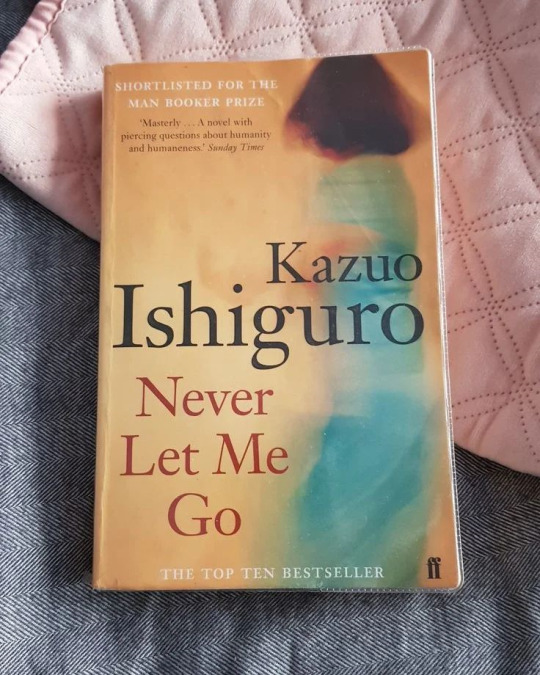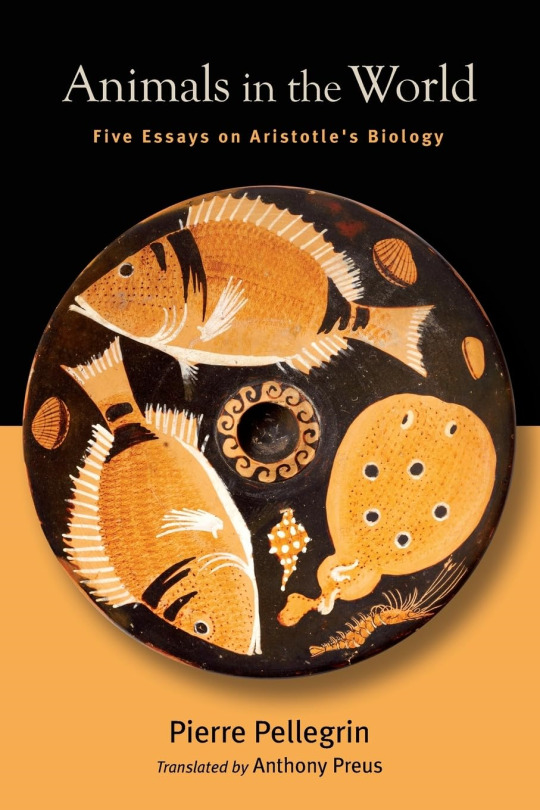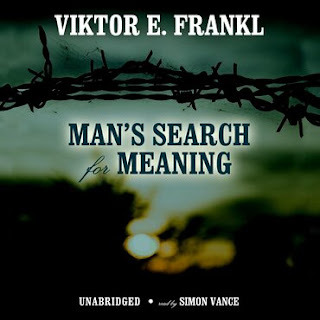Photo

(via The Song of Achilles by Madeline Miller)
"As fascinating as the main characters were, more fascinating was the bond between them. The love Achilles and Patroclus shared. That kind of love was on some spiritual level. It can make you high. It was selfish, not selfish, hungry, ruthless, helpless, dangerous, lovely, magical..."
#fantasy#historical fiction#novel#fiction#romance#love#mythology#greek mythology#retellings#classics#achilles#patroclus#gods#war#the song of achilles#madeline miller
0 notes
Photo

(via Revenge: Eleven Dark Tales by Yoko Ogawa)
"...Starting from the first story, which deals with a dead boy's birthday cake (a strawberry shortcake, specifically) the journey sort of backtracks in a sense and comes full circle with the last one which ends like this - 'Crouching down at the door, I wept. For my dead self'..."
(Read more on Booksperience site.)
#japanese literature#fiction#short stories#yoko ogawa#eleven dark tales#eerie#horror#macabre#japan#asian literature#mystery#fantasy#japanese horror
0 notes
Photo

(via Never Let Me Go by Kazuo Ishiguro)
" 'Never Let Me Go' is set in a dystopian vision of late 1990s England, where a state-approved human cloning programme extends the lives of common people. The students, or clones, are raised in separate areas away from the outer world..."
(Read more on Booksperience site.)
#1990s#novel#fiction#sci-fi#science fiction#kazuo ishiguro#never let me go#dystopia#england#uk#english literature#hailsham#romance#bildungsroman#love#speculative fiction
0 notes
Photo

(via Animals in the World - A Study of Aristotelian Biology by Pierre Pellegrin)
"While all his previous classic Greek biologists were either purely mechanists or formalists, he understood the true diversity of the animal world and formulated his theories with a more realistic outlook..."
(Read more on Booksperience site)
#books#reading#non-fiction#animals#biology#history#aristotelian biology#aristotle#animals in the world#pierre pellegrin#anthony preus#translation#biologists#galileo#the church#darwin#cuvier#genetics#evolution#darwinian evolution#essays#scientific study#scientific#hypothesis#the greek
1 note
·
View note
Photo

(via Lessons in Chemistry by Bonnie Garmus)
"...a chemist named Elizabeth Zott as she works to navigate her professional life in the 1960's. Through a series of unexpected events, Elizabeth finds herself on center stage as she teaches women to cook across the country on live television..."
(Read more on Booksperience site)
#historical fiction#booksperience#books#reading#fiction#novel#lessons in chemistry#feminism#empowerment#motherhood#sports#family trauma#family#debut novel#humour#southern california#california#sexual assault#single mother
0 notes
Photo

(via Good Girl by Anna Fitzpatrick)
"I felt like I was reading a story about myself during the time I was living in Toronto as a 20-something woman. It was scary how much I could relate to the main character, Lucy, with her awkwardness and desire to be good and make people like her..."
(Read more on Booksperience site)
#adult fiction#anna fitzpatrick#bdsm#canada#canadian authors#canadian literature#contemporary#desire#erotic#feminism#fiction#good girl#kink#kinky#literary fiction#media#men#novel#romance#secretary#toronto#women
0 notes
Photo

(via How It Happened by Shazaf Fatima Haider)
Now Dadi has set out to ensure that the next generation does not fall prey to a love-shove marriage (in her own words) . She sets out to find a bride for her favourite grandson. She does this by making a checklist and narrowing down the list after careful consideration...
(Read more on Booksperience site.)
#arranged marriage#breezy#culture#desi#desi family#family#fiction#booksperience#reading#books#fun reads#funny#generation gap#how it happened#humour#indian subcontinent#library pick#marriage#novel#pakistan#pakistani literature#pakistani novel#pakistani writing#shazaf fatima haider#tradition
0 notes
Photo

(via The Reluctant Fundamentalist by Mohsin Hamid)
While this conversation scene is fairly tranquil, the subject matter is not. Changez is subjected to constant “othering” during his stay in the US. Even prior to the World Trade Center attacks, he is never quite included in social circles, never quite one of the crowd...
(Read full text on Booksperience site.)
#changez#america#usa#pakistan#princeton#new york#expatriates#terrorism#9/11#twin towers#twin tower attack#world trade center#world trade center attack#pakistani literature#english literature#fiction#novel#lahore#immigrants#books#reading
0 notes
Photo

(via Norwegian Wood by Haruki Murakami)
"Murakami has this way with his words to guide us through this intricate journey as we meet Toru, Naoko, Midori, Reiko, and a whole lot of unique characters, their life, Trauma, Depression, and help us understand their inner struggles to move past the barriers and open up their heart for another person..."
(Read full on Booksperience site)
#books#reading#booksperience#fiction#novel#murakami#haruki murakami#norwegian wood#toru#toruwatanabe#naoko#midori#relationships#depression#trauma#kizuki#tokyo#japan#japanese literature#death#youth
0 notes
Photo

(via The Covenant of Water by Abraham Verghese)
“... water depicts every conceivable human emotion in some form or another; from invisible water vapour to a raging ocean, the water can mirror all the mental states of humans. In The Covenant of Water, the water is not just mirroring emotions; it becomes an emotion...”
(Read full on Booksperience site)
#books#reading#the covenant of water#water#abraham verghese#mystery#india#kerala#history#curse#novel#fiction#culture#drama#emotions#family#oprah's book club selection#oprah's book club#literary fiction#historical fiction
1 note
·
View note
Photo

(via The Dark Portal by Robin Jarvis)
While The Dark Portal by Robin Jarvis is categorised as a children’s novel, its appeal extends to adults as well. (In fact, some readers argue that its highly eerie elements might not be suitable for young children.) The narrative leads you on an exhilarating journey into the animal realm, especially the world of mice and rats. This novel serves as the inaugural part of The Deptford Mice Trilogy.
A community of anthropomorphic mice lives contentedly within an old building in the London borough of Deptford. They revel in their distinctive lifestyle, replete with customs, festivities, and even a deity. Their sole dread is ‘The Grille,’ the entrance to a menacing labyrinth of sewage tunnels beneath, the domain of large rats capable of devouring them. It also houses the altar of ‘Jupiter,’ the formidable Lord of the rats. One day, the mouse Albert crosses The Grille by mistake, setting off a sequence of gripping events. This includes the mysterious disappearance of his daughter, Audrey, into the sewers, prompting other mice to venture into the treacherous territory in search of her.
The depictions are vivid, and I could almost envisage the scenes as if they were part of an animated film. I believe a cinematic adaptation of this tale would be seamless and straightforward. A diverse array of mouse and rat characters, each with their distinctive traits, populate the story. Oswald, the albino mouse; Piccadilly, the independent soul; Madame Akkikuyu, the fortune-teller rat; Skinner, whose stump of an arm sports a mouse-peeler; and One-eyed Jake are just a few examples. The story encompasses various types of mice. Besides city mice and field mice, there is also a seafarer midshipmouse called Thomas...
(Read full text on booksperience.org)
#books#reading#booksperience#book review#adventure#animals#anthropomorphic#children's literature#deptford#deptford mice#deptford mice trilogy#english literature#fiction#london#mice#mouse#rats#robin jarvis#the dark portal#trilogy#ya#young adult
0 notes
Photo



(via Silent Reading Clubs at Panampilly Nagar)
Silent Reading Clubs at Panampilly Nagar
Something amusing occurred on a recent Saturday at Panampilly Nagar Central Park in Kochi. Kochi Book Reading Club had organized a readers’ gathering for silent reading at 4.30 PM. This marked their fourth meetup since the group’s inception just a month ago. However, on the very same day, a new group called Kochi Reads had scheduled its inaugural gathering at 4 PM at the same venue.
People who had seen the announcements from both groups arrived and commenced the silent reading session. Those who had noticed the Kochi Book Reading Club announcement assumed that the gathering was affiliated with that particular group. Likewise, those who had seen the Kochi Reads announcement believed it was associated with their group. Consequently, two distinct groups gathered at the same location and sat together, silently engrossed in their own books, entirely unaware that there were two separate groups.
Nevertheless, it didn’t significantly impact the activity, as each participant became absorbed in the book they held, regardless of the book club’s name. Nevertheless, I do wish that both groups would consider merging, as it would be a better arrangement...
(Read full text on booksperience.org)
#books#reading#booksperience#book club#book club gathering#book club meetup#book lovers#cochin#ernakulam reads#india#india reads#indian readers#indian readers club#kerala#kerala readers#kochi#kochi book reading club#kochi readers#kochi reads#silent book club#silent reading club#panampilly nagar
0 notes
Photo

(via Why I Am a Hindu by Shashi Tharoor)
In Why I Am a Hindu by Shashi Tharoor, the author sort of answers the question in the title in the first chapter itself. In other words, if you are looking for a brief answer to the question ‘Why I Am a Hindu’ posed in the title, you only need to read this section of the book. The remainder of the book offers a comprehensive commentary on Hinduism, which may also be considered an elaboration of his abovementioned answer in the initial chapter. His answer could be summarized in the below words which appear in a later part of the book.
“I too, as a Hindu, can say, when people tell me ‘Garv se kaho ki tum Hindu ho’, that I am proud to be a Hindu, but in what is it that we are to take pride? I take pride in the openness, the diversity, the range, the lofty metaphysical aspirations of the Vedanta; of the various ways in which Hinduism is practised, eclectically, and of its extraordinary acceptance of differences. Unfortunately, as I have noted, the votaries of Hindutva seem to take pride in Hinduism the way in which one might support a football team as a badge of identity, rather than as a set of values, principles and beliefs, and so Hinduism becomes reduced in their retelling to little more than a label on a T-shirt, a badge of allegiance rather than a way of relating to the cosmos.”
This passage elucidates what Hinduism signifies to him, in contrast to the interpretations of many others who claim affiliation with it.
There are different sections in the book divided into multipe chapters that delve into various facets of Hinduism, such as its origin, history, different schools of thought, the Hindu culture and its diversity across the states of India as manifested in its rituals, forms of worship, deities, festivals, customs, and lifestyles.
The book seeks to find clarity of...
(Read full text on booksperience.org)
#books#reading#booksperience#andrew hoffland#audiobook#bharat#deen dayal upadhyay#golwalkar#hindu#hindu nationalism#hinduism#hindutva#india#indian#indian literature#non-fiction#religion#s radhakrishnan#savarkar#shashi tharoor#spirituality#vivekananda#why i am a hindu
0 notes
Photo

(via Man’s Search for Meaning by Viktor E Frankl)
Man’s Search for Meaning is a memoir by Viktor E Frankl, a Jewish Austrian psychotherapist and Holocaust survivor. It summarizes his observations of people, including himself, enduring suffering in Hitler’s concentration camps and examines the psychological impacts the harsh experiences had on them.
The author meticulously investigates the transformations in the minds of prisoners and categorizes their mental and spiritual states over time into distinct stages, drawing upon his professional expertise. He even explains how bizarre it turns out with certain prisoners finding it hard to cope with a life of freedom when they manage to be free after years of captivity in the camps, where torment had become their norm.
He emphasizes that men (read men and women) need a purpose in life, something to live for, even if it’s something imaginary, as a means to navigate the hardships of such environments and persevere through the torture and agony. He asserts that those who succumb to suffering are destined to perish while those who find meaning in their pain somehow manage to survive.
The book also introduces his psychotherapeutic method called Logotherapy, which shares some similarities...
(Read full text on booksperience.org)
#books#reading#booksperience#audiobook#concentration camps#hitler#holocaust#logotherapy#man's search for meaning#non-fiction#psychiatry#psychoanalysis#psychology#self help#viktor e frankl#viktor frankl
0 notes
Photo

(via Manju by M T Vasudevan Nair)
I haven’t enjoyed much of whatever I have read of M T Vasudevan Nair’s fiction so far, except Naalukettu, particularly because of its ending, and one of his short stories. And every time I read one of his books, I sincerely hope it would resonate with me. However, it’s only now that I’ve found a novel by him I can honestly say I love and admire. This book Manju (Mist) stands apart from most of his other works; the story doesn’t take place in Kerala but in an exotic Nainital, and perhaps this is his only novel featuring a female protagonist.
It’s not a full-fledged novel, but a novella spanning sixty-odd pages and is sweet like a little melancholic poem. Vimala is a boarding school resident teacher in Nainital who chooses to stay in the school quarters even during the summer vacation when all the students and staff leave for their homes. She rarely visits her family. It’s the end of winter and the start of the tourist season where Vimala sometimes talks to the boy known as ‘Buddhu’ who operates a boat for tourist trips around the Nainital lake. She also has a brief encounter with a Sardar who comes for a short stay in the area. There’s hardly anyone else there she’s acquainted with except the school guard, and she spends her vacation immersed in her solitude. Vimala has never gotten over the thoughts of her lost boyfriend, and so is ‘Buddhu’ about his father, and both sort of await their return each tourist season, even though they are not certain about anything.
The smoothness of the narration is not upset by any sort of disturbance or turbulence despite the prevalence of such elements throughout the story as they remain a silent undercurrent never rising to the surface to disrupt the serene flow of thoughts, dreams, memories, and feelings. There are enough factors in the plot...
(Read full text on booksperience.org)
#books#reading#booksperience#fiction#indian literature#kerala literature#lake#m t vasudevan nair#malayalam books#malayalam fiction#malayalam literature#malayalam novel#manjj#manju#m t#nainital#nainital lake#novel#novella#snow#tourists#vimala
1 note
·
View note
Photo

(via On Biographies...)
They say, writing the autobiography is like masturbation, eulogizing oneself, self-gratifying. However, I am aware that there are exceptions, though I haven’t read many autobiographies. But that happens when the autobiography ceases to be one’s own exclusive story and becomes the story of many others in one way or the other. In Nithyachaithanya Yathi‘s autobiography Yathicharitham, he says:
“Historic events have never revolved around me. My words don’t carry the purity or the charm of any essential quality capable of drawing the contemporary world to them. And though I laboured to tread the path of devotion, my soul doesn’t radiate the uncorrupted beauty like that of Tulsidas, Kabirdas, or Saint Francis. So if you ask why such a nonentity like me has penned his autobiography, I only have this one answer… It’s more fitting to let one’s own self serve as an example of how human life could repeatedly stumble into darkness unawares than point one’s finger to someone else in a laughter of ridicule or a sympathy that evokes discomfort.”
How beautiful!
And now I’m reading another autobiography, An Autobiography by Jawaharlal Nehru. Nehru writes about it:
“Essentially an autobiography is a personal document and therefore it reflects personal views and reactions. But the person who wrote it became merged, to a lar...
(Read full text on booksperience.org)
#books#reading#booksperience#biographies#biography#history#india#jawaharlal nehru#nehru#nithya#nithyachaithanya yathi#yathi#yati
0 notes
Photo

(via Sojourn by Amit Chaudhuri)
In the very short novel Sojourn penned by Amit Chaudhuri, the Bengali protagonist finds himself in the Berlin of 2005, where he assumes the role of a visiting professor at some university. There is no definite plot and the narration looks dreamy, offering an account of his encounters with various individuals in the city, especially Faqrul, a Bengali poet living in exile, and a European woman named Birgit. It is his second time in the city, but he feels like a stranger. He wanders the streets of Berlin, visiting its restaurants and museums, seemingly attempting to establish a connection with the city’s history and the city itself.
There are no chapter divisions; the text appears as vignettes of the narrator’s day-to-day experiences in the city and his interactions and conversations with the people he encounters as he struggles to get a grip on it all. The narrative style, the overall structure, a pervasive sense of solitude, and the impressions it creates on you could sometimes remind you of Sartre‘s Nausea.
The storytelling never hastens. It is often pensive and takes its time and moves at its own unhurried pace. Beneath the apparent tranquillity of events, there are subtle undercurrents of confusion, uncertainty, and anxiety. I couldn’t help but imagine how well this story would translate to the silver screen, as I have a penchant for films featuring a limited cast and expansive spaces. Even the pages and the print layout match it. There are empty spaces, and pages left empty after every ch...
(Read full text on booksperience.org)
#books#reading#booksperience#2005#abstract#alone#amit chaudhuri#bengal#bengali#berlin#exile#existentialism#fiction#foreign country#foreigner#germany#impressonistic#modern art#novel#novelette#plotless#sojourn#solitude#university
0 notes